This article was medically reviewed by Sarah Gehrke, RN, MS. Sarah Gehrke is a Registered Nurse and Licensed Massage Therapist in Texas. Sarah has over 10 years of experience teaching and practicing phlebotomy and intravenous (IV) therapy using physical, psychological, and emotional support. She received her Massage Therapist License from the Amarillo Massage Therapy Institute in 2008 and a M.S. in Nursing from the University of Phoenix in 2013.
There are 9 references cited in this article, which can be found at the bottom of the page.
wikiHow marks an article as reader-approved once it receives enough positive feedback. This article received 19 testimonials and 91% of readers who voted found it helpful, earning it our reader-approved status.
This article has been viewed 356,702 times.
Each finger's motion is controlled by the tendon(s) attached to it. Each finger tendon passes through a small "sheath" before it connects to muscles in the forearm. If the tendon becomes inflamed, a nodule can form, making it difficult for the tendon to pass through the sheath and causing pain as the finger flexes. This condition is called "trigger finger" and is characterized by one or more fingers painfully "locking" when bent, making motion difficult and uncomfortable. To learn various methods for treating this condition, start with Step 1 below.
Steps
Using a Finger Splint
-
1Place the affected finger in an aluminum flexion finger splint. These finger splints use a stiff aluminum frame to hold the finger in place as it heals. Place the splint on the palm side of the finger with the foam against the skin. It should conform to the shape of your finger.[1]
- Aluminum flexion splints (or similar splints) can be purchased at nearly any pharmacy for relatively cheap.
-
2Curve the aluminum so that the finger is slightly bent. Gently press the splint into a slightly curved shape that's comfortable for your finger. If it's too painful or difficult to to do this with the affected finger, don't be afraid to use your other hand.[2]
- When your splint is comfortably bent, secure it to your finger with the provided straps or metal arms. If none are provided, use medical tape.
Advertisement -
3Leave in place for 2 weeks. The nodule should begin to regress with enforced lack of movement. Over time, you should experience a reduction in pain and inflammation and the return of your full range of motion.[3]
- You may want to take your splint off to bathe and clean yourself. However, when you do so, try to avoid flexing your finger or doing anything else that may aggravate your condition.
-
4Protect your finger. With rest, most cases of trigger finger will self-resolve. However, this requires patience and care to ensure the finger isn't disturbed while it's in the splint. Avoid strenuous physical activities that require the use of your hands, especially sports like basketball, football, and baseball where you may have to catch a fast-moving object. If possible, also avoid using your splinted finger to lift heavy objects or support your weight.[4]
-
5Remove the splint and test your finger's motion. After a few weeks, take your finger out of its splint and try flexing it. You should be able to move your finger with less pain and difficulty. If your condition is better but you still experience some pain, you may want to wear the splint for a little longer or see a doctor for other options. If your condition doesn't seem any better or seems to have worsened, you should definitely make a doctor appointment.[5]
Treating Trigger Finger Medically/Medicinally
-
1Use over-the-counter NSAIDs. Non-Steroidal Anti-Inflammatory Drugs (NSAIDs) are common, easily-available drugs sold without a prescription. These drugs, including the well-known painkillers ibuprofen and naproxen sodium, ease mild pain as well as reducing inflammation and swelling. For an inflammatory condition like trigger finger, NSAIDs are a perfect "first line of defense", providing quick relief from pain and reducing troublesome symptoms.[6]
- However, NSAIDs are relatively mild drugs and won't help especially bad cases of trigger finger. Simply increasing the dosage of NSAIDs is ill-advised, as NSAID overdose can damage the liver[7] and kidneys. If your trigger finger is persistent, don't rely on this treatment as a permanent fix.
- Long-term use of NSAIDs can also put you at risk for ulcers. Talk to your doctor before using them if you have a history of stomach ulcers.[8]
-
2Receive a cortisone injection. Cortisone is a natural hormone released by the body belonging to a class of molecules called steroids (note: these are not the same as the steroids that are sometimes used as illegal athletic aids). Cortisone has potent anti-inflammatory properties, making it useful for treating trigger finger and other inflammatory disorders. Talk to your doctor about a cortisone injection if your trigger finger won't subside with rest and over-the-counter medication.[9]
- Cortisone is given in the form of an injection directly into the affected area - in this case, the tendon sheath. Though this can be done in the doctor's office in a matter of minutes, you may need to return for a second injection if the first provides only partial relief.[10]
- Finally, cortisone injections aren't as effective for people who have certain medical conditions (like diabetes).[11]
-
3Consider surgery for especially bad cases. If your trigger finger still persists after lengthy rest, NSAID treatment, and multiple cortisone injections, surgery may be necessary. The surgical procedure that fixes trigger finger involves cutting the tendon sheath. When the sheath heals, it's looser and better-able to accommodate the nodule on the tendon.[12]
- This surgery is usually done on an outpatient basis - in other words, you won't need to spend the night at the hospital.
- Usually, local, rather than general anesthesia is used for this surgery. This means that your hand will be numbed so that you don't feel any pain, but you'll stay awake.
Expert Q&A
Did you know you can get expert answers for this article?
Unlock expert answers by supporting wikiHow
-
QuestionHow do you relieve the numbness?
 Sarah Gehrke, RN, MSSarah Gehrke is a Registered Nurse and Licensed Massage Therapist in Texas. Sarah has over 10 years of experience teaching and practicing phlebotomy and intravenous (IV) therapy using physical, psychological, and emotional support. She received her Massage Therapist License from the Amarillo Massage Therapy Institute in 2008 and a M.S. in Nursing from the University of Phoenix in 2013.
Sarah Gehrke, RN, MSSarah Gehrke is a Registered Nurse and Licensed Massage Therapist in Texas. Sarah has over 10 years of experience teaching and practicing phlebotomy and intravenous (IV) therapy using physical, psychological, and emotional support. She received her Massage Therapist License from the Amarillo Massage Therapy Institute in 2008 and a M.S. in Nursing from the University of Phoenix in 2013.
Registered Nurse
-
QuestionIf my thumb hurts more in the mornings when I use the splint, should I keep using it anyway?
 Sarah Gehrke, RN, MSSarah Gehrke is a Registered Nurse and Licensed Massage Therapist in Texas. Sarah has over 10 years of experience teaching and practicing phlebotomy and intravenous (IV) therapy using physical, psychological, and emotional support. She received her Massage Therapist License from the Amarillo Massage Therapy Institute in 2008 and a M.S. in Nursing from the University of Phoenix in 2013.
Sarah Gehrke, RN, MSSarah Gehrke is a Registered Nurse and Licensed Massage Therapist in Texas. Sarah has over 10 years of experience teaching and practicing phlebotomy and intravenous (IV) therapy using physical, psychological, and emotional support. She received her Massage Therapist License from the Amarillo Massage Therapy Institute in 2008 and a M.S. in Nursing from the University of Phoenix in 2013.
Registered Nurse
References
- ↑ https://www.mountsinai.org/health-library/selfcare-instructions/mallet-finger-aftercare
- ↑ https://www.nhs.uk/conditions/trigger-finger/treatment/
- ↑ https://www.physio-pedia.com/Trigger_Finger
- ↑ https://orthoinfo.aaos.org/en/diseases--conditions/trigger-finger/
- ↑ https://orthoinfo.aaos.org/en/diseases--conditions/trigger-finger/
- ↑ https://www.nhs.uk/conditions/trigger-finger/treatment/
- ↑ http://www.ncbi.nlm.nih.gov/pmc/articles/PMC2997980/
- ↑ https://www.ncbi.nlm.nih.gov/pubmed/2040888
- ↑ https://www.assh.org/handcare/condition/trigger-finger
About This Article
The easiest way to treat trigger finger is with a finger splint. Start by placing the affected finger in an aluminum flexion finger splint, which you can buy at any pharmacy for relatively cheap. Gently press the splint into a slightly curved shape that feels comfortable for your finger, then secure it in place with the provided straps or metal arms. Leave the splint in place for about 2 weeks so your finger can heal. When you're ready, remove the splint and test your finger's range of motion. If it still hurts a lot, wear the splint a little longer or consider seeing a doctor. To learn about medicines you can use to treat your finger, read on!
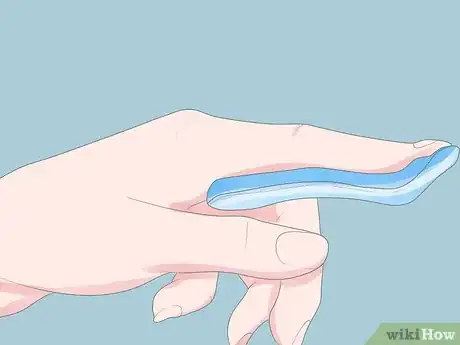
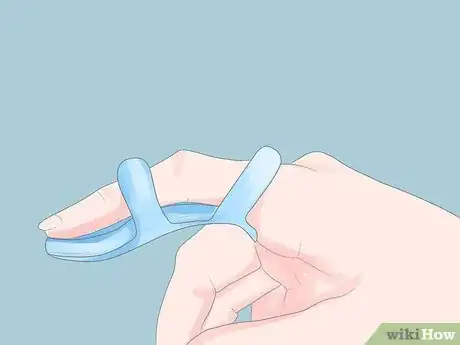
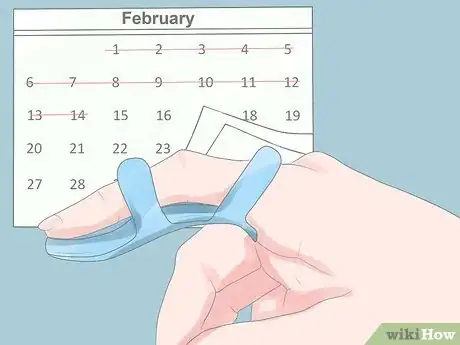
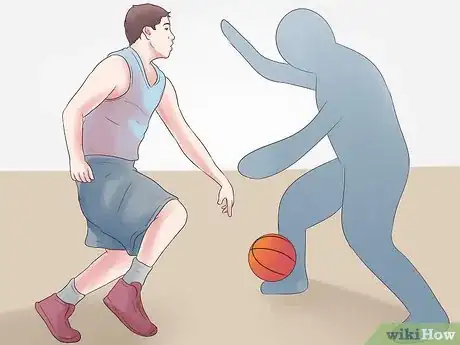
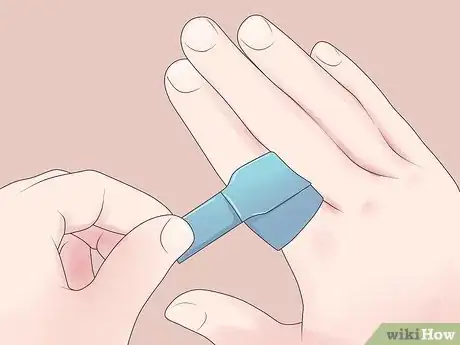


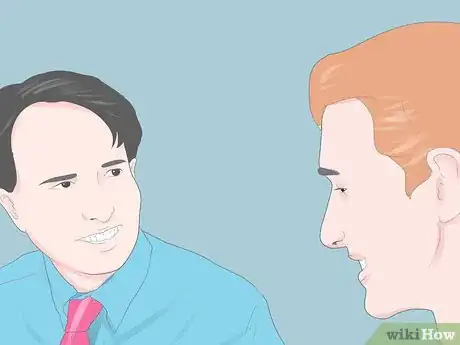

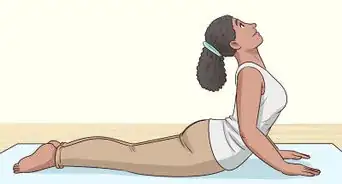
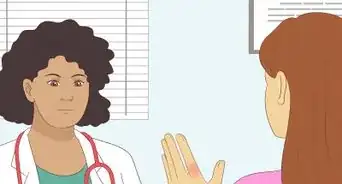
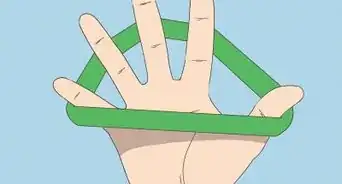

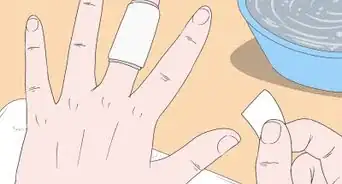

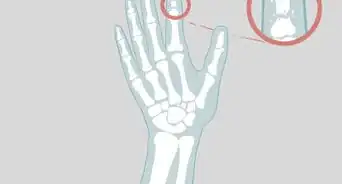


















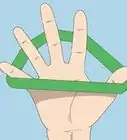



































Medical Disclaimer
The content of this article is not intended to be a substitute for professional medical advice, examination, diagnosis, or treatment. You should always contact your doctor or other qualified healthcare professional before starting, changing, or stopping any kind of health treatment.
Read More...